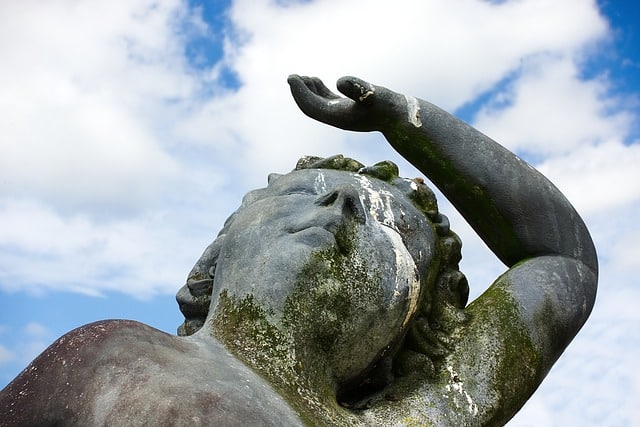Long before scientists provided detailed accounts of plant nutrition, ancient farmers learned through experience that crop yields decreased from year to year. Eventually they concluded that just like humans and animals, crops had to be fed. Over 2000 years ago, Chinese rice growers were applying burnt animal bones to their fields and nobody really knows when native North Americans began burying dead fish in-between rows of corn. We certainly do know that they taught the practice to the Plymouth settlers. We also know that George Washington fertilized more than American minds. America’s first president took great interest in farming and concluded that the criteria for better crop growth were loose earth and soil “amendments.” He experimented with manure, creek mud, plaster of Paris, lime, “green manure” (ploughing buckwheat, clover and peas into the soil) and fish heads! The President was certainly on the right track, each of these “amendments” was capable of contributing some nutrition to the soil.
The most significant advance in fertilizer development, however, came about in an accidental fashion. And for this we can thank a Spanish missionary to Chile whose name has been lost to history. Some natives had extinguished a fire by throwing some hard, dry earth onto the hot coals and were staggered by the acrid purple vapours that suddenly were released. Some sort of evil spirits, the natives probably thought, and grabbed a few chunks of the dry earth to show the priest, whom they assumed would have an explanation. He didn’t and threw the samples into his garden. A few months later, the alert missionary noted that there was an increased growth of vegetation where the chunks had landed. “Chile saltpetre,” the fertilizer that would revolutionize agriculture had been discovered. As chemists later learned, Chile saltpetre was mostly sodium nitrate, and was an excellent substance for introducing soluble nitrogen into the soil. Nitrogen is a component of all proteins, including the enzymes which are instrumental in every phase of plant growth. Many of the vitamins that plants produce as well as the chemicals with which they protect themselves against insects and fungi contain nitrogen. But what caused the irritating, purplish vapours? Saltpetre is commonly contaminated with sodium iodate, which when heated releases a variety of iodine compounds that can cause a choking sensation.
By the seventeenth century, Chilean saltpetre was widely imported into Europe, along with another South American commodity that had been found to increase soil fertility. This was guano, or bird excreta. Like saltpetre, it was an excellent source of nitrogen and furnished phosphorus to boot. Peru was the first recognized source of extensive deposits of bird poop, but by the 1800s many South Pacific islands were also found to be overflowing with seabird guano. To this day, guano is an important source of fertilizer, helping to feed the world. But it has also helped overfeed the natives of the guano producing islands.
Contrary to what many may think, Americans are not the fattest people in the world. That dubious honour goes to the inhabitants of the Pacific island of Nauru who boast of having one of the highest per capita incomes in the world. And that thanks to bird droppings! Fertilizer companies pay high prices for the chance to harvest the guano, allowing natives to trade in their ploughshares for easy chairs. As their level of activity decreased, imports of beer, meat and chips increased. The result is that about seventy percent of the natives of Nauru are obese and a third suffer from diabetes.
Exactly why saltpetre and guano increased yields interested the great German chemist Justus von Liebig. He decided to solve the mystery by burning plant material and analysing the residue. In 1840 he published his classic “Organic Chemistry in its Applications to Agriculture and Physiology” which clearly established him as the father of modern soil science. Liebig’s analysis revealed that the major minerals present in plant residue were nitrogen, phosphorus and potassium and that the reason saltpetre and guano enhanced plant growth was because they were rich sources of nitrogen and phosphorus. Potassium, he said, could be supplied by potash. This was originally obtained by soaking the ashes of wood to dissolve the potassium salts and filtering the suspension and boiling off the water in a pot to leave a white ash, “potash’” which was mostly potassium carbonate.
Liebig also determined that plants needed different minerals in different amounts and propounded his “Law of Minimum” which states that if one of the nutritive elements is deficient or lacking, plant growth will be poor even if the other elements are abundant. If the deficient element is supplied, growth will be increased up to the point where that element is no longer the limiting factor. Increasing the supply beyond this point is not helpful. Liebig went on to clearly explain that adding manure to soil was an excellent way of recycling these minerals but suggested that more efficient fertilizers with an ideal balance of nutrients could be developed.
Liebig’s theories launched research into the systematic development of mineral fertilizers without which we could not possibly feed the population of the world.











